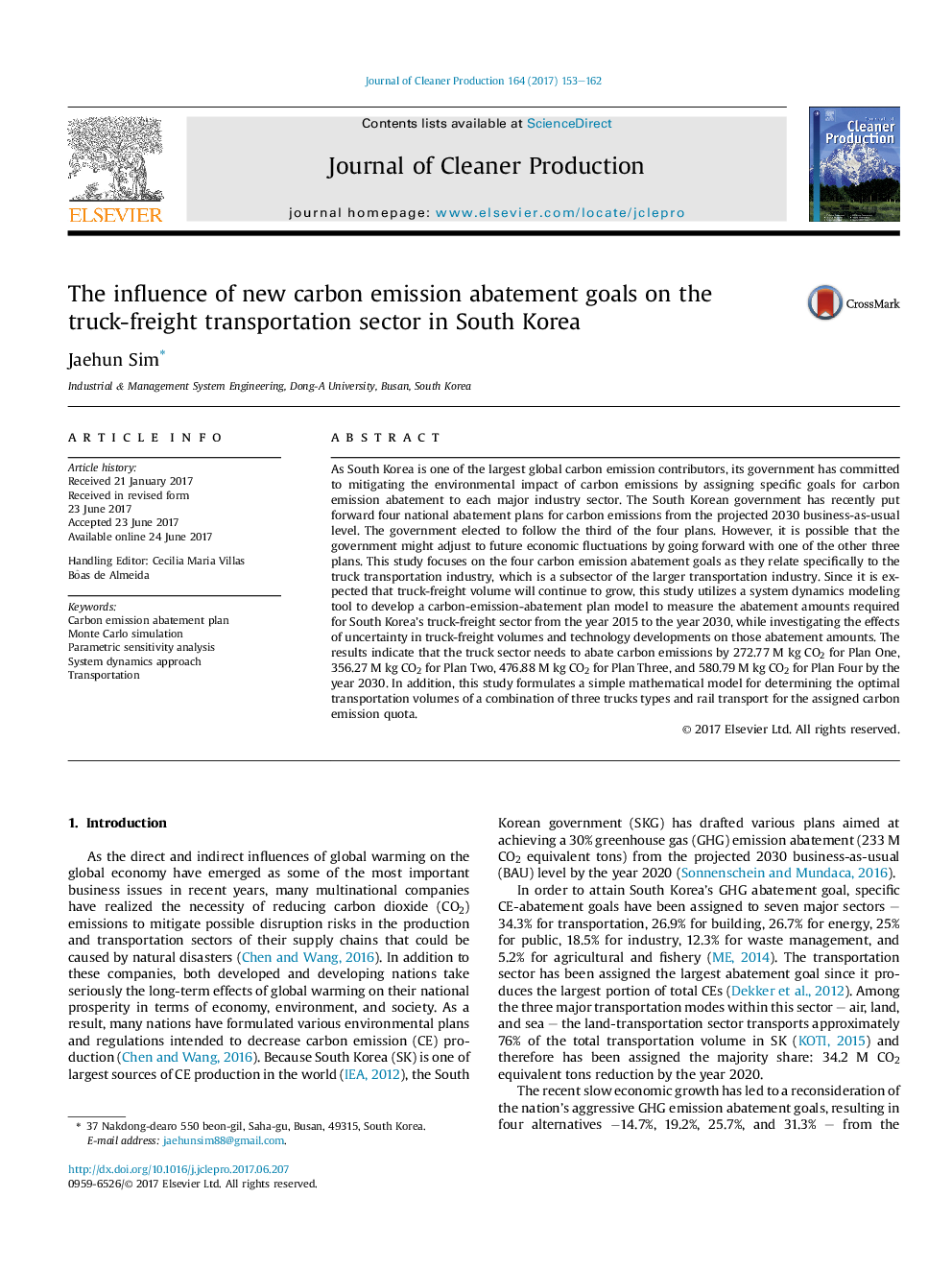ترجمه فارسی عنوان مقاله
تأثیر اهداف کاهش انتشار کربن در بخش کامیون حمل و نقل در کره جنوبی
عنوان انگلیسی
The influence of new carbon emission abatement goals on the truck-freight transportation sector in South Korea
| کد مقاله | سال انتشار | تعداد صفحات مقاله انگلیسی |
|---|---|---|
| 95477 | 2017 | 10 صفحه PDF |
منبع

Publisher : Elsevier - Science Direct (الزویر - ساینس دایرکت)
Journal : Journal of Cleaner Production, Volume 164, 15 October 2017, Pages 153-162
ترجمه کلمات کلیدی
طرح کاهش انتشار کربن، شبیه سازی مونت کارلو، تجزیه و تحلیل حساسیت پارامتری، رویکرد دینامیک سیستم، حمل و نقل،
کلمات کلیدی انگلیسی
Carbon emission abatement plan; Monte Carlo simulation; Parametric sensitivity analysis; System dynamics approach; Transportation;

